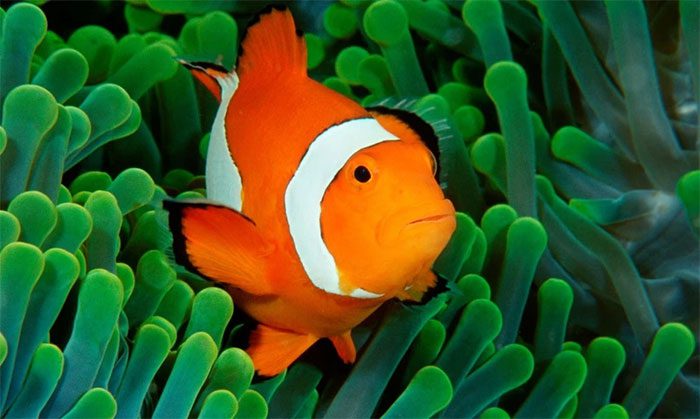Research shows that clownfish rarely share their home with other individuals of the same species. Clownfish typically live alone or in pairs, and they tend to keep a safe distance from one another in the wild.
Researchers have reported discovering how clownfish drive away unwanted guests from their homes by counting white stripes, as reported by The Guardian.

Clownfish can differentiate between various numbers of white stripes. (Photo: Wolfgang Polzer/Alamy)
According to the study, the species of anemone that clownfish often inhabit can also serve as a temporary home for other species—as long as they have horizontal stripes or none at all. However, clownfish typically do not cohabitate with species that have vertical stripes similar to their own.
Instead, experiments indicate they become more aggressive towards fish displaying such patterns.
“There may be other factors, aside from the vertical white stripes, that play an important role in distinguishing their own species,” said Dr. Kina Hayashi, a lead author of the study from the Okinawa Institute of Science and Technology.
“But this experiment at least suggests that the number of vertical white stripes is important for how they identify their species and determine whether to attack or not,” she added.
In a paper published in the Journal of Experimental Biology, researchers in Japan described how they caught juvenile clownfish that had never seen other species and placed a small transparent box in the tank.
In the first case, the box contained a clownfish of the same species—a bright orange fish with three vertical white stripes.
In the second case, the box contained a different clownfish species—the orange skunk clownfish—which only had a single horizontal white stripe along its back.
The results showed that clownfish exhibited aggressive behavior more frequently towards members of their own species.
Subsequently, the research team exposed the clownfish to orange-painted model fish categorized into four types: none, one, two, or three vertical white stripes.
They found that the aggressive behavior frequency of this group towards the model with no stripes was significantly lower compared to the striped models.
Based on individual behaviors, the research team also observed that clownfish were more aggressive towards the model with three vertical stripes compared to one stripe.
Hayashi noted that this finding is particularly interesting because the ecological role of white stripes in clownfish—also known as anemone fish—was previously unclear.
“This result supports the view that clownfish can differentiate between various numbers of white stripes and that the difference in stripe quantity helps clownfish identify their own species,” she stated.


















































